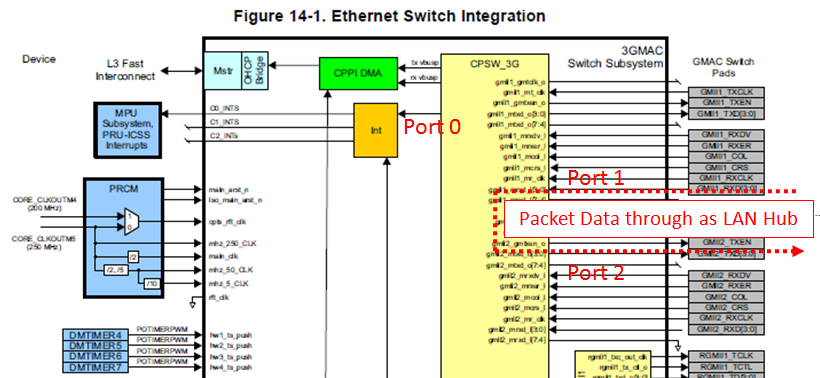Hi,
I want to achieve the LAN hub function with 2 ethernet ports on the AM3352 Ethernet Subsystem.
I think possible because the 3PSW supports a Layer 2 switching, Can I use the 3PSW as follows?
When the packet data come into ether port 1, this packet data is moving through to ether port2 without CPU and/or DMA intervention.
Best regards,
H.U


